Number Bonds - Definition, Examples, Quiz, FAQ, Trivia
Understanding How Numbers Work Together
What are Number Bonds?
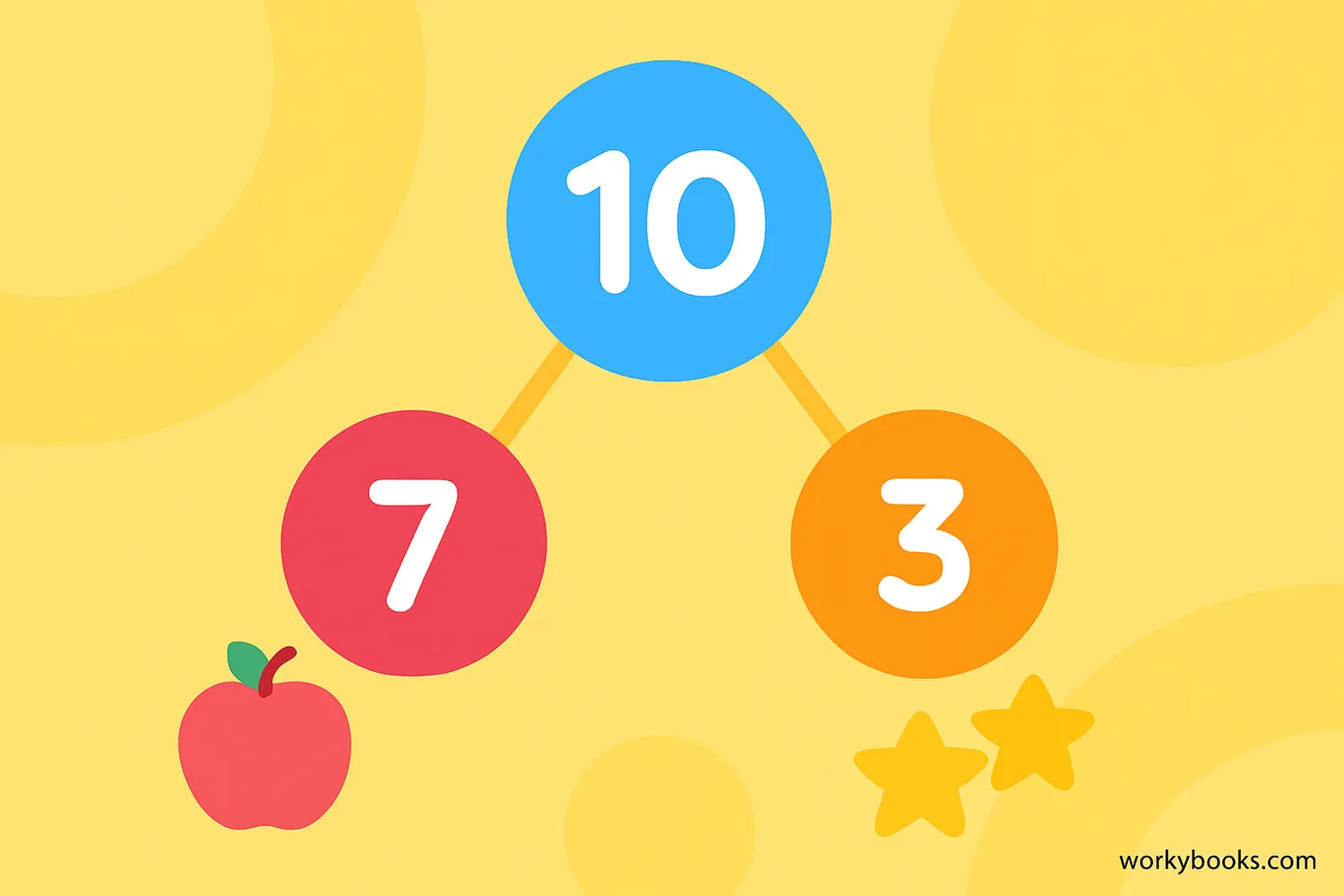
Number bonds are a simple but powerful way to show how numbers can be broken down into smaller parts. Think of them like a number family that stays together!
A number bond shows the relationship between a whole number and its parts. For example, the number 5 can be broken into 2 and 3, or 1 and 4, or 5 and 0. Understanding these relationships helps build a strong foundation for addition and subtraction.
Math Fact!
Number bonds help students understand the part-whole relationship, which is a fundamental concept in mathematics that supports learning addition, subtraction, multiplication, and division.
Number Bonds to 5
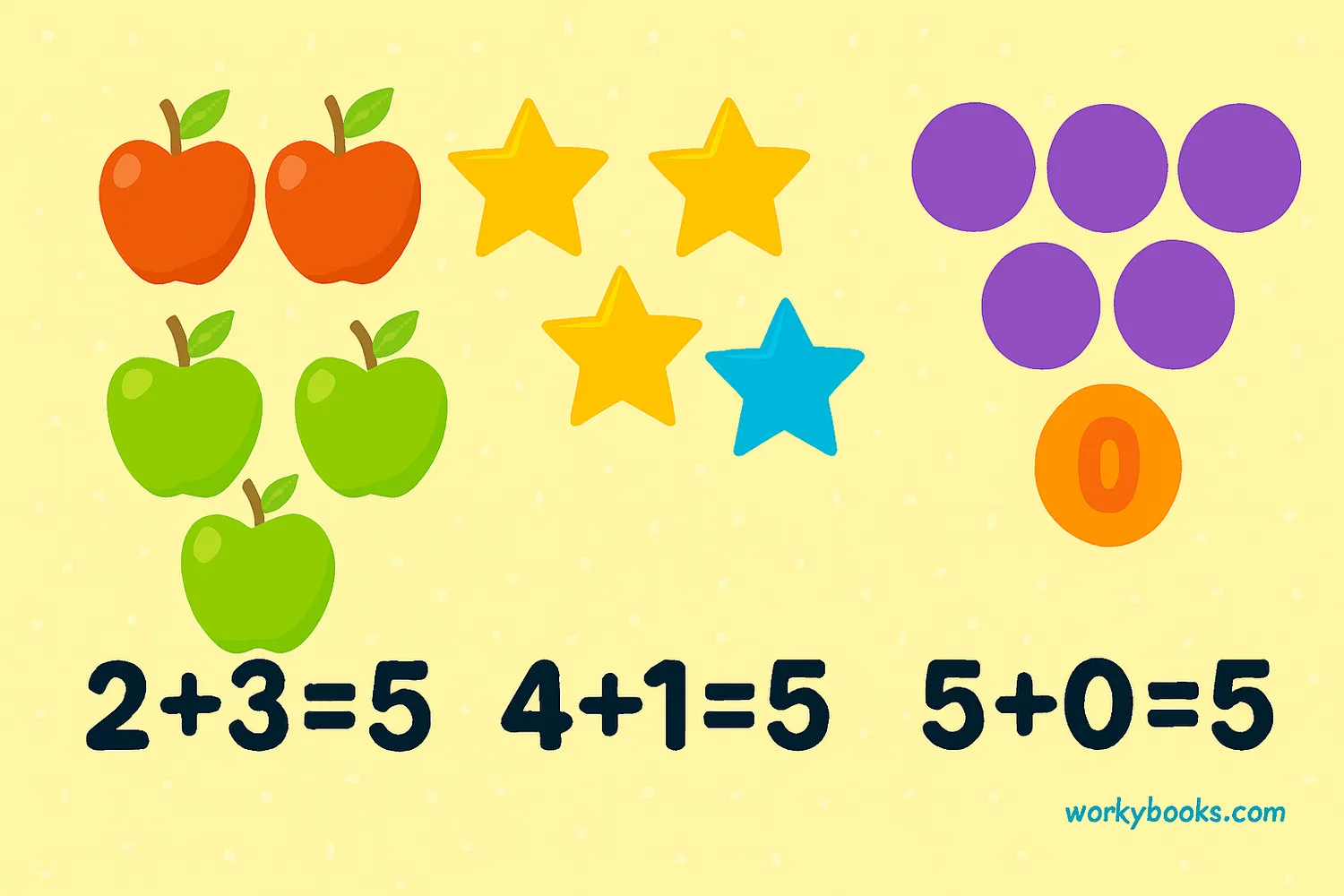
Number bonds to 5 are perfect for beginners! Since 5 is a small number, it's easy to see all the different ways to make it. You can use your fingers to help - one hand has 5 fingers!
0 + 5 = 5
Zero plus five equals five
1 + 4 = 5
One plus four equals five
2 + 3 = 5
Two plus three equals five
3 + 2 = 5
Three plus two equals five
4 + 1 = 5
Four plus one equals five
5 + 0 = 5
Five plus zero equals five
Notice how number bonds work both ways! If 2 + 3 = 5, then 5 - 3 = 2 and 5 - 2 = 3. This helps us understand addition and subtraction together.
Number Bonds to 10
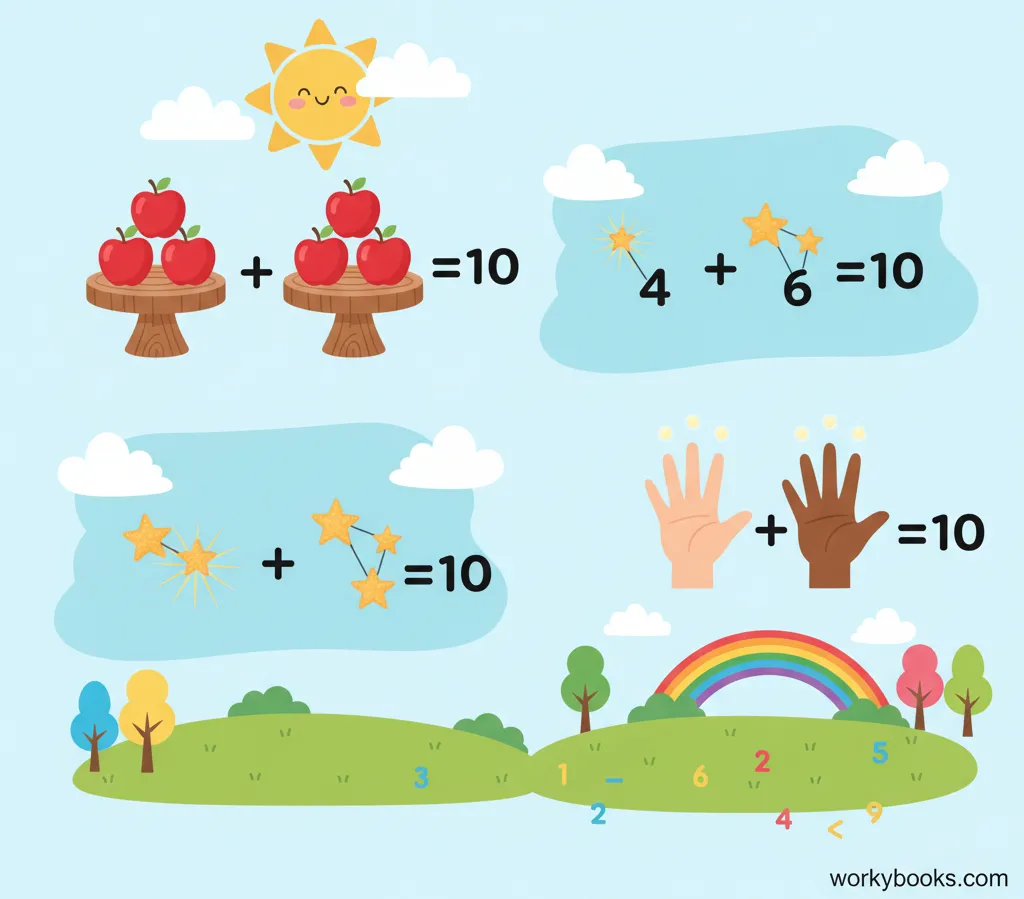
Number bonds to 10 are especially important because our number system is based on 10. Knowing these number bonds by heart will make math much easier as you learn more advanced concepts.
Here are all the number bonds that make 10:
0 + 10
Zero plus ten
1 + 9
One plus nine
2 + 8
Two plus eight
3 + 7
Three plus seven
4 + 6
Four plus six
5 + 5
Five plus five
6 + 4
Six plus four
7 + 3
Seven plus three
8 + 2
Eight plus two
9 + 1
Nine plus one
10 + 0
Ten plus zero
Learning Tip!
Try using objects like blocks or buttons to physically create number bonds. This hands-on approach helps make the concept more concrete for young learners.
Number Bonds to 20
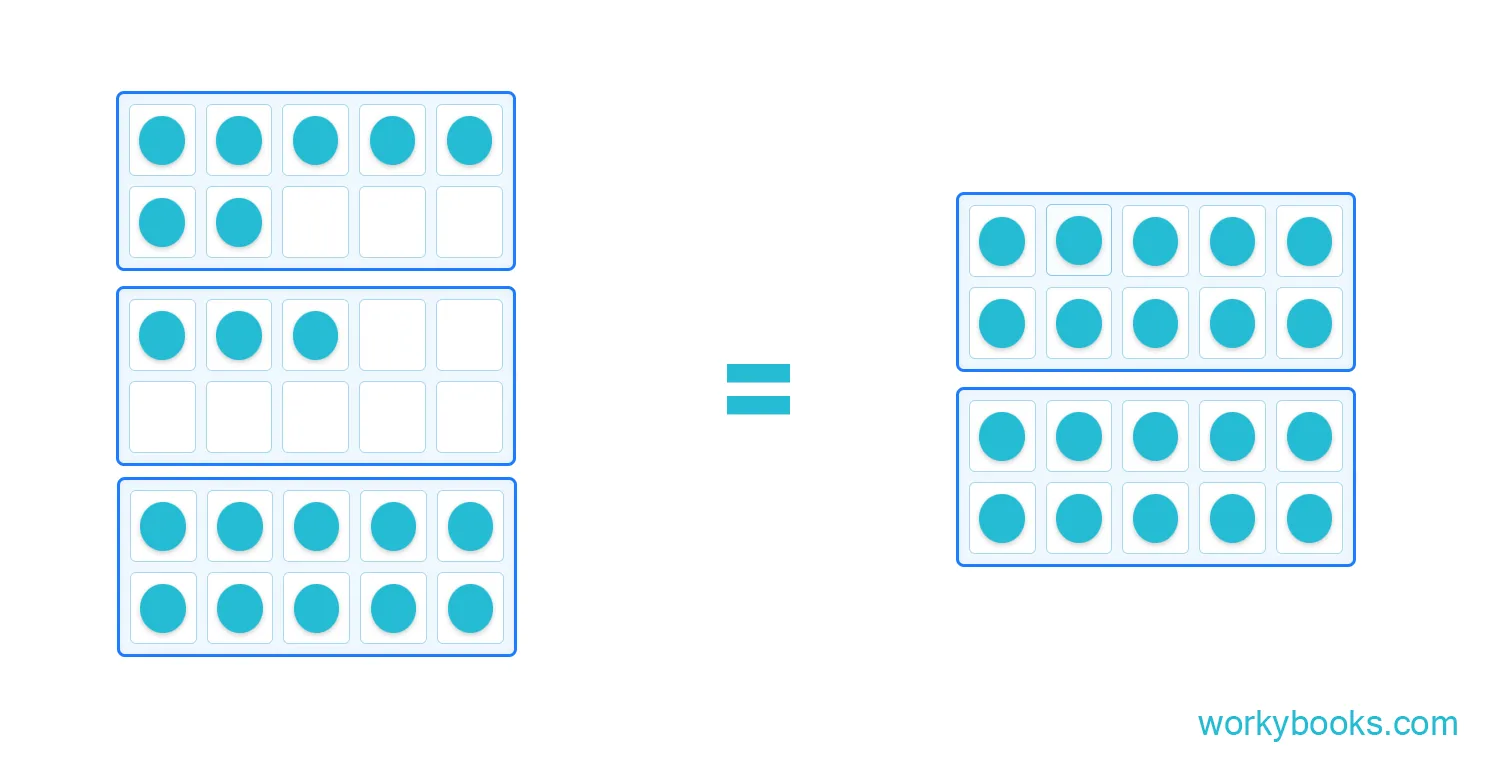
Once you've mastered number bonds to 10, it's time to move on to number bonds to 20! These build on what you already know about making 10.
To find number bonds to 20, you can think about:
Doubles
10 + 10 = 20
Making 10 first
8 + 2 = 10, then 10 + 10 = 20
Using known facts
If 7 + 3 = 10, then 17 + 3 = 20
Some examples of number bonds to 20 include: 15 + 5, 12 + 8, 17 + 3, 9 + 11, and 13 + 7. There are many combinations!
Number Bonds to 100
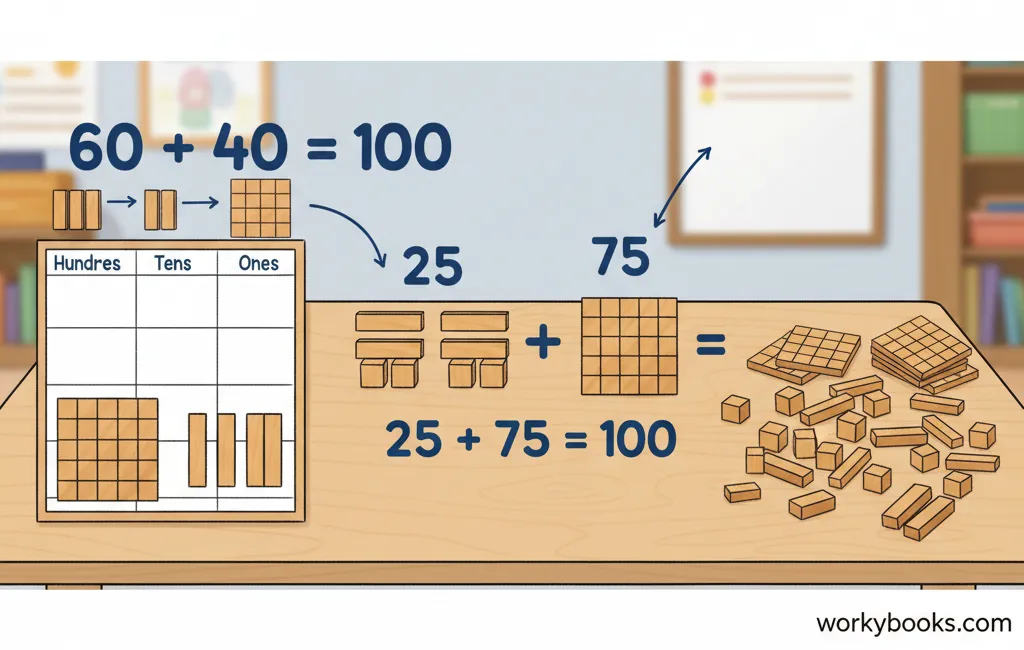
Number bonds to 100 help us understand our base-10 number system. These are especially useful for learning about money, measurement, and more advanced math concepts.
To work with number bonds to 100, it helps to think in tens:
Multiples of 10
30 + 70 = 100
20 + 80 = 100
Using 50 as a benchmark
50 + 50 = 100
45 + 55 = 100
Compensation strategy
If 60 + 40 = 100, then 59 + 41 = 100
Number bonds to 100 can also involve decimals, like 25.5 + 74.5 = 100, but usually we focus on whole numbers when first learning this concept.
Real-World Connection!
Number bonds to 100 are useful in everyday life - when counting money (pennies make a dollar), measuring (centimeters in a meter), or time (minutes in an hour).
Number Bonds Quiz
Test your knowledge with this quiz! Answer all 5 questions to see how much you've learned about number bonds.
Frequently Asked Questions
Here are answers to some common questions about number bonds:
Math Facts About Number Bonds
Discover some fascinating facts about number bonds and mathematics!
Historical Origins
The concept of number bonds originated in Singapore, which is known for its highly effective mathematics education program. Singapore Math introduced number bonds as a way to help students visualize number relationships.
Brain Development
Learning number bonds helps develop important neural pathways in the brain related to number sense. This foundational skill makes learning more advanced math concepts easier later on.
Real-World Applications
Number bonds are used in many real-world situations without us even realizing it! When making change for money, measuring ingredients for recipes, or dividing items among friends, we're using number bonds.
Pattern Recognition
As students work with number bonds, they begin to recognize patterns in numbers. For example, they might notice that when adding numbers to make 10, the pairs (1,9), (2,8), (3,7), (4,6), and (5,5) are all number bonds for 10.





